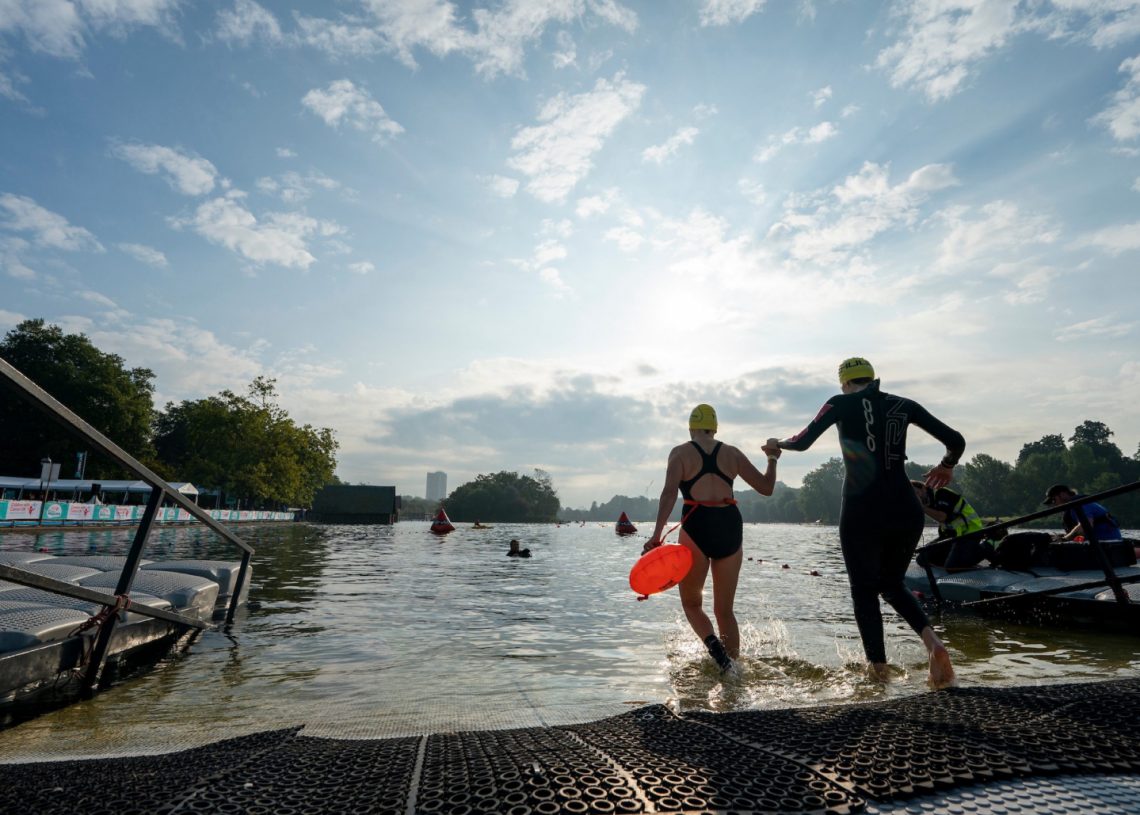
How to get the most from a swimming event
You won’t regret signing up to an event, says Simon Griffiths. Here’s how to make the most of the experience.
Most outdoor swimming events offer something for all types of swimmers. For those who like the thrill of head-to-head racing, that can usually be found at the front of the pack or, sometimes, in a designated competitive wave. If you want to swim the course using head-up breaststroke, chatting with a friend and enjoying the views, that is equally acceptable – and, if you think about the time you get in the water, much better value for your money.
Still, it pays to do your research. Every event offers something unique. Consider what you want to get out of an event, and then look for swims that offer that.
All events provide a safe and risk-assessed swim with full life-guard supervision. You can be confident the entry and exit points to the water have been checked, and in the unlikely event you do get into difficulties on the swim, there will be someone there to assist you. Other water users will be kept away, so you won’t be hit by a boat or get tangled in a fishing line.
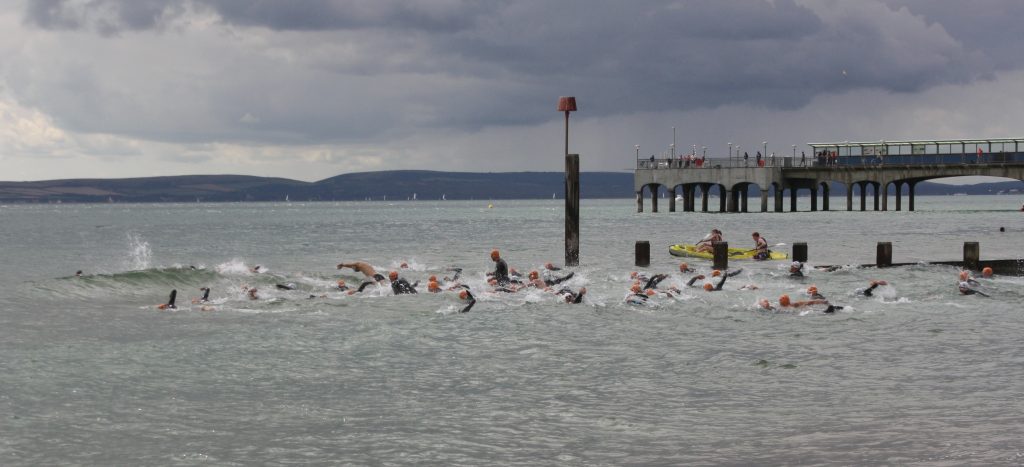
Safety, for many people, is the biggest draw of an event. Often, it would be possible to do the swim independently, but that would require you to organise your own safety and support. This can be fun and adventurous, but it requires more effort on your part.
Some swims are impractical or impossible without the supporting infrastructure of an event: for example, in places where access to the water requires the use of private land or if boat traffic needs to be stopped.
Other reasons people do events include:
- Completing a recognised and accurately measured distance
- Enjoying a fun day out with family and friends
- Racing against the clock or against other swimmers
- The buzz you get from the pre-event adrenalin rush
Doing an event is always an adventure. Events can encourage you to attempt longer distances than you’re used to, swim in different water types and conditions, travel to new places, and help you connect with other swimmers from around the country or even around the world. They give you something to aim for, drag you out of your routine and encourage you to explore your limits. When you look back over your year, the events you do will feature in the highlights, so what are you waiting for?
How to choose your event
When it comes to choosing which event to sign up for, much depends on your personal preferences. For example, you might find an event with the most spectacular scenery, but the distance(s) on offer don’t match what you want, or it could be a course that offers good racing conditions but uninspiring surroundings. To make the most of an event, pick one that matches your preferences and aspirations. Here are a few things to look out for when signing up.
Water type
Events take place in rivers, lakes, lochs, estuaries, canals, docks and the sea. Each offers something different. The sea, for example, is more likely to be rough, which adds both to the fun and the challenge. A down-river swim can be exhilaratingly fast. Lochs are often stunningly beautiful.
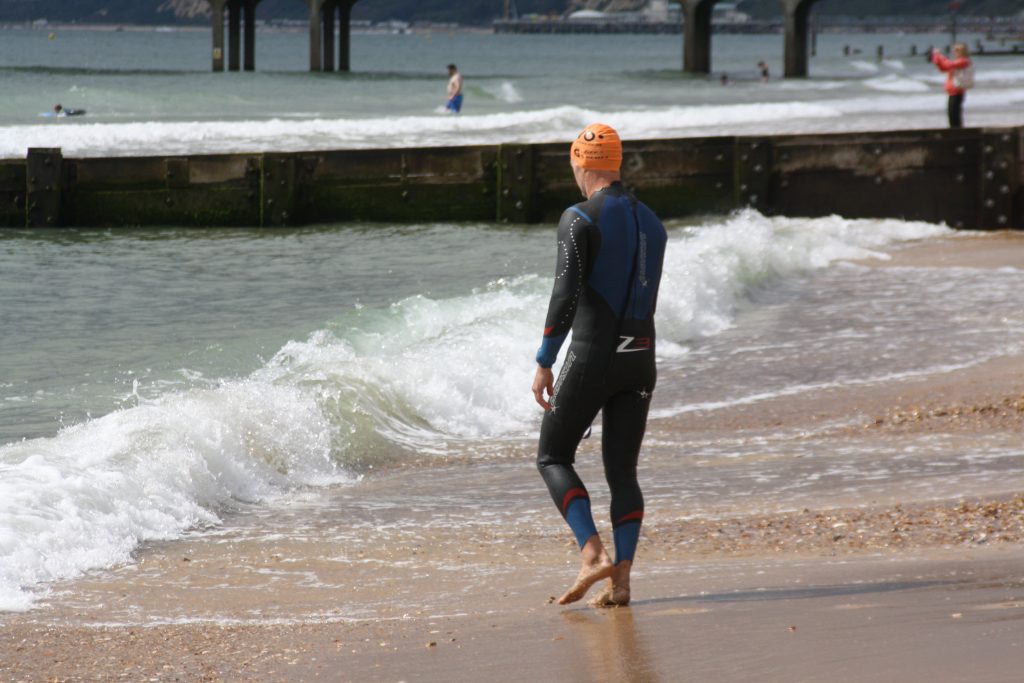
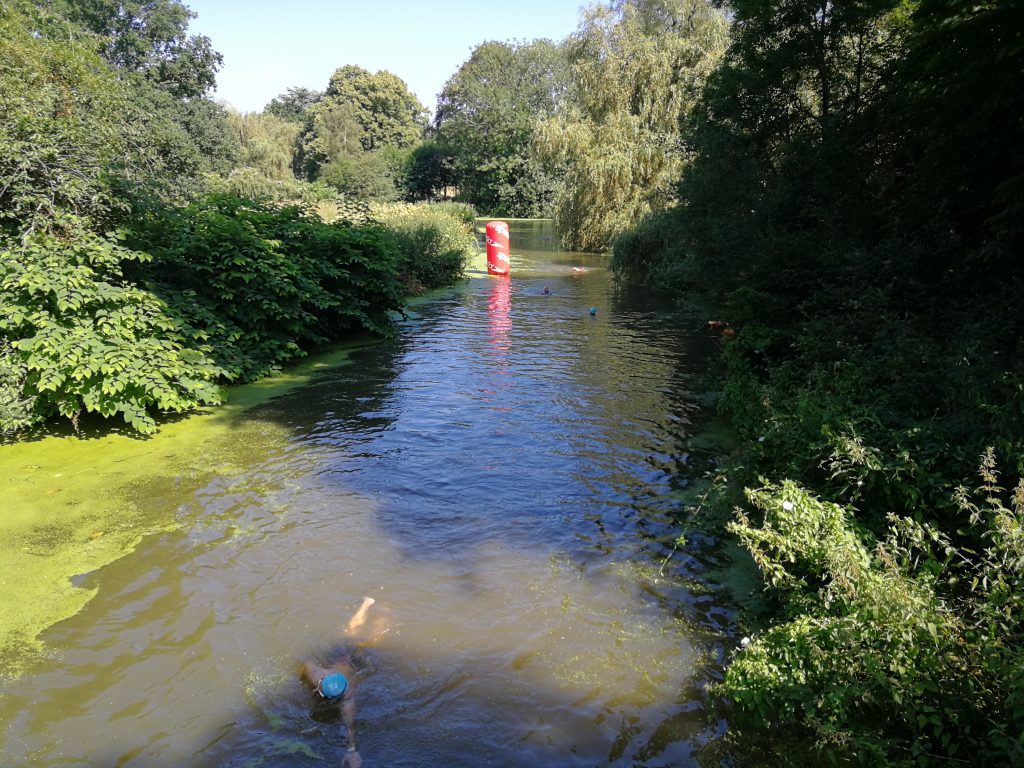
Wetsuit policy
Always check the organiser’s wetsuit rules. Some events are strictly non- wetsuit, others are wetsuit compulsory, many make it optional while some have temperature-based rules based on guidelines from FINA (the International Swimming Federation) or drawn from triathlon. In some cases, swimming without a wetsuit is only allowed if you can demonstrate suitable experience.
Tow float policy
As with wetsuits, race organisers policies differ widely, but tow floats are increasingly required at events, especially if you opt to swim without a wetsuit.
Distance(s) and course type
Do you like lapped courses or point- to-point events? The most usual fixed distance events offered are 750m, 1500m, 1 mile, sometimes 1.9 and 3.8km to match triathlon distance swims, 5km and 10km. The latter is the distance of the open water marathon in the Olympics, which makes it a tempting goal to aim for. Alternatively, the distance may be determined by natural features, such as the length or the width of a lake. For example, Coniston, in England’s Lake District, is 5.25 miles long.
Start and finish type
Will all swimmers start together (mass start) or will they be staggered? Do you start on land and run into the water, or start in the water? Does the swim finish in the water or do you have to exit onto land? These may just be tactical considerations, but swimmers differ in what they like best. Also, swimmers with mobility difficulties may need to ask the organiser to make special arrangements if the start or finish is on land.
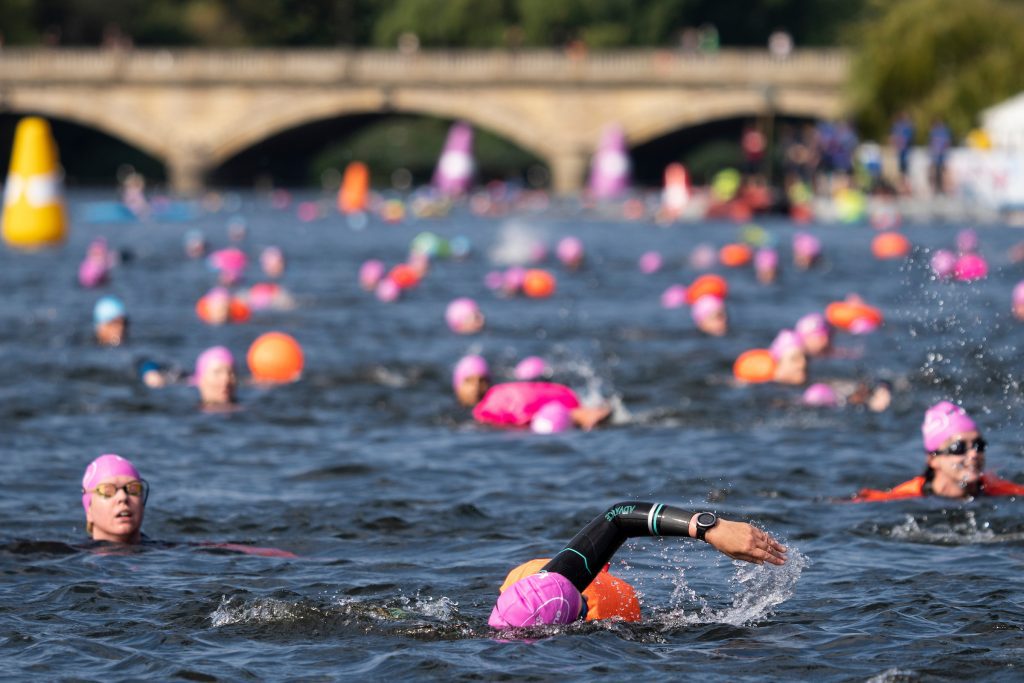
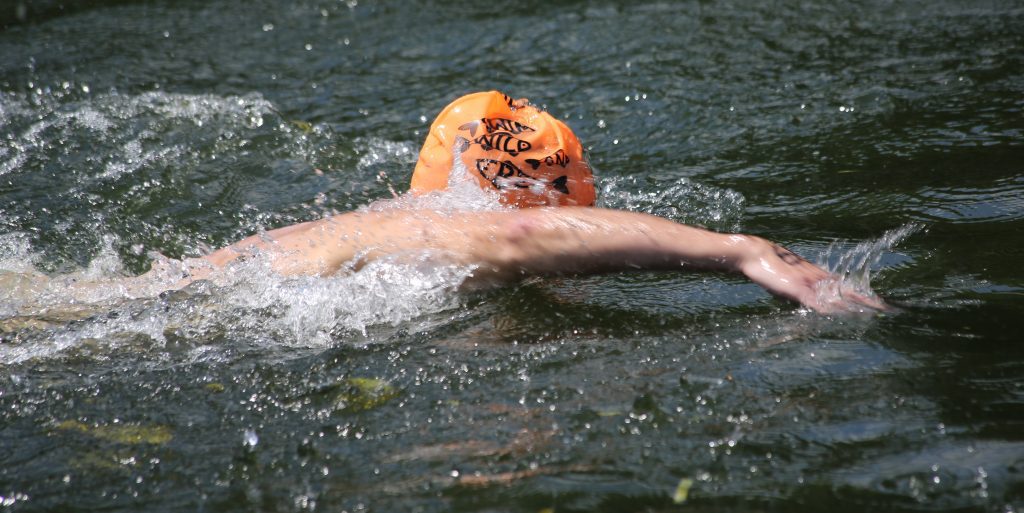
Personal preferences
Do you like the buzz of a big event, with thousands of swimmers and a festival atmosphere, or do you prefer low-key swims with just a handful of enthusiasts? Do you mind changing under your towel in a windy car park or do you want proper changing facilities and hot showers? Do you want to use public transport to reach the event or do you need to park close to the start? All these things are worth checking before signing up.
What does your entry fee get spent on?
Entering an event can be a significant financial commitment and you may be wondering where all the money goes. Here are some of the things event organisers spend your money on to ensure you have a safe and enjoyable experience.
- Venue hire / landowner fees
- Marquee hire
- Portaloo hire
- Timing systems plus team
- Safety team
- Medical team
- Volunteer lunches
- Payment processing fees
- Entry system fees
- Administration costs and staff salaries
- Insurance
- Website upkeep
Given the cost of doing a swim, it’s worth checking the organisers refund policy as there is no standard.
Looking for more inspiration?
Check our Outdoor Swimmer Events Guide 2023 for all the best swimming events taking place this year.
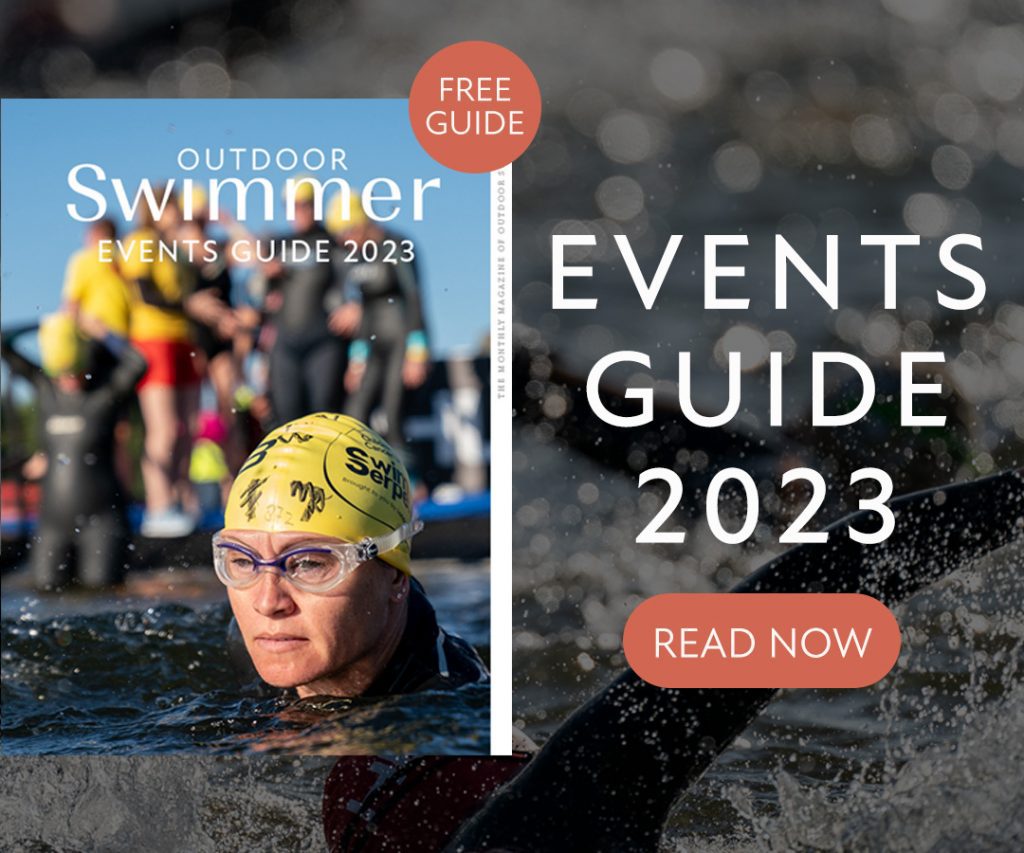
This feature was originally published in Outdoor Swimmer, June 2022. Subscribe to the magazine to get the latest edition delivered to your door. Main photo: Swim Serpentine.








